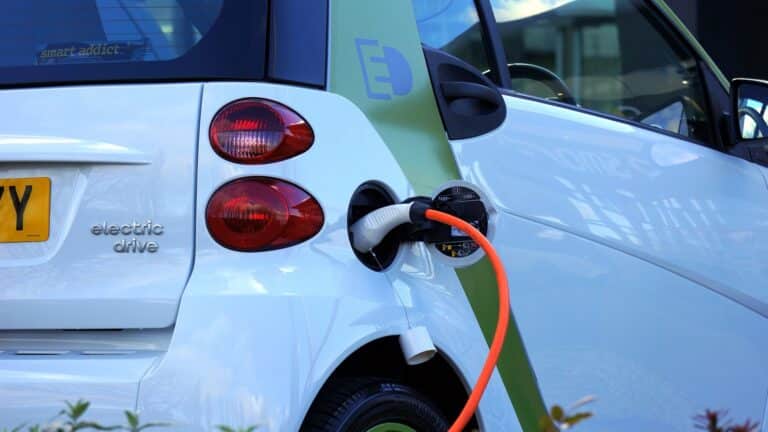This report represents the research and views of the author. It does not necessarily represent the views of the Center on Global Energy Policy. The piece may be subject to further revision. Contributions to SIPA for the benefit of CGEP are general use gifts, which gives the Center discretion in how it allocates these funds. More information is available here. Rare cases of sponsored projects are clearly indicated.
For a full list of financial supporters of the Center on Global Energy Policy at Columbia University SIPA, please visit our website. See below a list of members that are currently in CGEP’s Visionary Annual Circle.
-
CGEP’s Visionary Annual Circle
-
(This list is updated periodically)
Air Products
Anonymous
Jay Bernstein
Breakthrough Energy LLC
Children’s Investment Fund Foundation (CIFF)
Occidental Petroleum Corporation
Ray Rothrock
Kimberly and Scott Sheffield
Tellurian Inc.
Executive Summary
There is a strong and growing consensus that a simultaneously growing and decarbonizing electricity sector is necessary to meet declining greenhouse gas emissions targets. Rallying cries to “electrify everything” have captured the focus of many headlines and policy forums in recent years. However, there are important questions that remain unanswered about the electrify everything movement, including the technical, social, and political feasibility of the approach, as well as the affordability and equitability of implementation. While reducing emissions is paramount in mitigating the negative impacts of the energy system to the environment and human health, it is also critical that changes to energy infrastructure are both socially and politically acceptable, as well as affordable to help ensure an economically vibrant future. These nuanced dynamics are not easily articulated in public forums regarding the goal to electrify everything. A more detailed assessment of the problem might discover a better path forward.
This report, part of the Power Sector and Renewables Research Initiative and Energy Systems Modeling Analytics program at Columbia University’s Center on Global Energy Policy, in conjunction with IdeaSmiths, examines eight recent major US studies on the topic. Six of the studies focus on strategies and pathways to a net-zero energy system and two assess the value of electrification and expanded transmission networks. This work serves to compare their assumptions and results. The authors’ purpose in analyzing the studies was threefold. First, the report explores the degrees of electrification in the United States that might be needed to achieve net-zero pathways as well as where and how electrification could occur under model assumptions. Second, it examines the relative roles of variable generation resources (e.g., wind and solar), energy storage (both short- and long-duration), and firm low-carbon power (e.g., natural gas with carbon capture, nuclear, hydro, and geothermal) in the energy transition to meet increasing levels of clean electricity demand. Finally, the report examines the barriers that could hinder both increased electrification and decarbonization of the pivotal power sector.
By examining and comparing the studies and scenarios within them, the authors were able to identify shared themes resulting in robust insights that can be useful in informing policy makers and guiding other decision-making processes. Broad recommendations across studies include: (1) decarbonizing electricity; (2) electrifying end uses; (3) lowering energy demand; and (4) increasing transmission, distribution, and energy storage infrastructure. Seven major barriers to expanding electrification include challenges around: (1) the pace of transition, (2) technology advancement, (3) infrastructure siting, (4) equipment cost, (5) supply chains, (6) human capital/jobs, and (7) public support.
To attain the various decarbonization goals analyzed in these studies, federal, state, and/or local regulators would need to implement an array of policies to accelerate the pace at which clean energy technologies are deployed. While the studies generally do not compare specific policies but rather the least-cost path(s) to achieving certain decarbonization targets, none of their reference scenarios indicate the energy sector will decarbonize fast enough to meet emissions targets without additional policies.
Other key findings regarding the potential for electrification in the United States drawn from the eight studies include the following:
- To meet the demands of an electrified economy, electricity generation will need to grow rapidly, up to four times current levels. Starting in 2020, current electricity generation levels of 3,900-4,300 terawatt-hours (TWh) will need to grow to between 5,000-16,000 TWh in 2050, depending on the degree of electrification and its sources.
- All studies indicate a future that heavily relies on renewable technologies such as wind and solar while reducing use of fossil fuels and phasing out coal by 2035. Of the five studies modeling scenarios out to 2050, wind and solar were expected to supply 43–91% of electricity generation, a 5- to 15-fold increase compared to today’s levels.
- A wide mix of technologies will be needed to achieve deep decarbonization within the power sector. Pursuing a 100 percent variable renewable energy electricity system is likely to cost more than pursing a diversified portfolio that also includes firm, low-carbon generation technologies such as geothermal and nuclear as well as various forms of energy storage (e.g., batteries, hydrogen, etc.).
- The studies’ scenarios also rely on increased transmission and flexible demands to efficiently deploy renewable energy resources across time and space. The required scale of transmission expansion is significant: One study estimates that $2.7 trillion in investment will be needed between 2020 and 2050, and another study assumes up to a 70 percent increase in total resource cost due, in part, to a 1,200 percent increase in transmission capacity over that currently installed.
- Despite the shift toward electrification, all studies include some continued use of some gaseous fuels, though the role of hydrogen and other synthetic gases varies greatly depending on assumptions.
- Multiple studies note that incentives for consumers of electric vehicles, heat pumps for space and water heating, and electric cooking could assist in increasing the pace of transition. In the highly electrified scenarios, the transportation sector sees rapid growth in EV sales across all vehicle classes, particularly light-duty vehicles. The same scenarios estimate that 100% of residential and commercial heating and cooking appliance sales need to be electric by between 2030 and 2040, and that by 2050, 95–100% of heating and cooking demand in the United States needs to be met by electricity.
- The studies find that some industry shifts to electrification due to efficiency gains, such as iron and steel making via electric arc-furnaces. However, for harder-to-electrify end uses such as freight, aviation, and other industry (e.g., cement, ammonia, hydrogen, biofuels, etc.), the studies favor the use of low-carbon fuels, increasing fuel efficiency, and pairing some end uses with carbon capture.
All of the studies examined in this report were completed prior to passage of the Inflation Reduction Act of 2022 (IRA). The IRA might shift the cost burden for different decarbonization solutions, but it does not invalidate the findings of the studies. While the IRA makes significant progress in addressing many challenges related to decarbonization, additional electrification hurdles will need to be overcome on the path to net-zero carbon emissions, as highlighted in this report.




